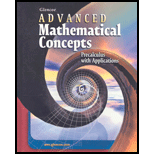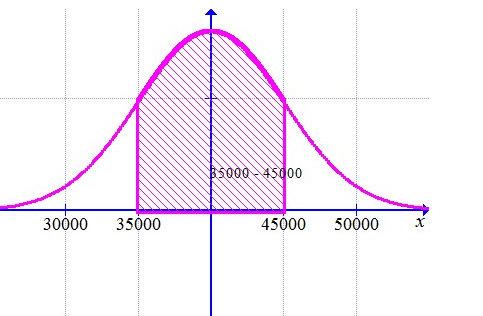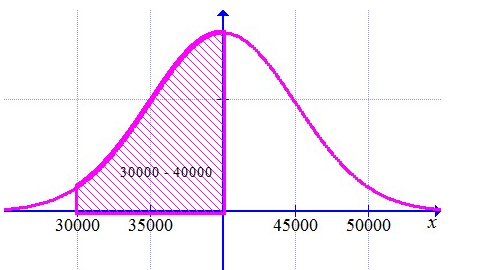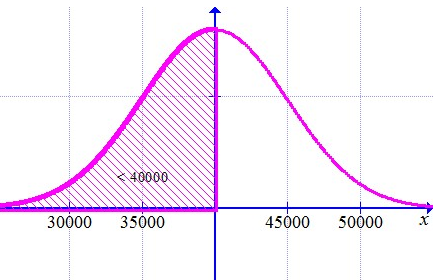
Concept explainers
a.
To find the number of tires would expect to last between
a.
Answer to Problem 34E
Explanation of Solution
Given:
The lifetimes of a certain type of car tire are
Calculation:
Find the percent of the data is between

The graph shows that
And the values of
Thus
The probability that the score is in between
Hence the total number of tires that expect to last between
b.
To find the number of tires would expect to last between
b.
Answer to Problem 34E
Explanation of Solution
Given:
The lifetimes of a certain type of car tire are normally distributed. The mean life time is
Calculation:
Find the percent of the data is between

The graph shows that
And the values of
Thus
The probability that the score is in between
Hence the total number of tires that expect to last between
c.
To find the number of tires would expect to last less than
c.
Answer to Problem 34E
Explanation of Solution
Given:
The lifetimes of a certain type of car tire are normally distributed. The mean life time is
Calculation:
Find the percent of the data is less than

It is half of the total therefore the total number of tires that expect to last less than
d.
To find the number of tires would expect to last more than
d.
Answer to Problem 34E
Explanation of Solution
Given:
The lifetimes of a certain type of car tire are normally distributed. The mean life time is
Calculation:
The probability that the score is in more than
Hence the total number of tires that expect to last more than
e.
To find the number of tires would expect to last less than
e.
Answer to Problem 34E
Explanation of Solution
Given:
The lifetimes of a certain type of car tire are normally distributed. The mean life time is
Calculation:
The probability that the score is in less than
Hence the total number of tires that expect to last less than
Chapter 14 Solutions
Advanced Mathematical Concepts: Precalculus with Applications, Student Edition
Additional Math Textbook Solutions
Calculus and Its Applications (11th Edition)
University Calculus: Early Transcendentals (4th Edition)
University Calculus: Early Transcendentals (3rd Edition)
Calculus: Early Transcendentals (3rd Edition)
Precalculus (10th Edition)
 Calculus: Early TranscendentalsCalculusISBN:9781285741550Author:James StewartPublisher:Cengage Learning
Calculus: Early TranscendentalsCalculusISBN:9781285741550Author:James StewartPublisher:Cengage Learning Thomas' Calculus (14th Edition)CalculusISBN:9780134438986Author:Joel R. Hass, Christopher E. Heil, Maurice D. WeirPublisher:PEARSON
Thomas' Calculus (14th Edition)CalculusISBN:9780134438986Author:Joel R. Hass, Christopher E. Heil, Maurice D. WeirPublisher:PEARSON Calculus: Early Transcendentals (3rd Edition)CalculusISBN:9780134763644Author:William L. Briggs, Lyle Cochran, Bernard Gillett, Eric SchulzPublisher:PEARSON
Calculus: Early Transcendentals (3rd Edition)CalculusISBN:9780134763644Author:William L. Briggs, Lyle Cochran, Bernard Gillett, Eric SchulzPublisher:PEARSON Calculus: Early TranscendentalsCalculusISBN:9781319050740Author:Jon Rogawski, Colin Adams, Robert FranzosaPublisher:W. H. Freeman
Calculus: Early TranscendentalsCalculusISBN:9781319050740Author:Jon Rogawski, Colin Adams, Robert FranzosaPublisher:W. H. Freeman
 Calculus: Early Transcendental FunctionsCalculusISBN:9781337552516Author:Ron Larson, Bruce H. EdwardsPublisher:Cengage Learning
Calculus: Early Transcendental FunctionsCalculusISBN:9781337552516Author:Ron Larson, Bruce H. EdwardsPublisher:Cengage Learning





